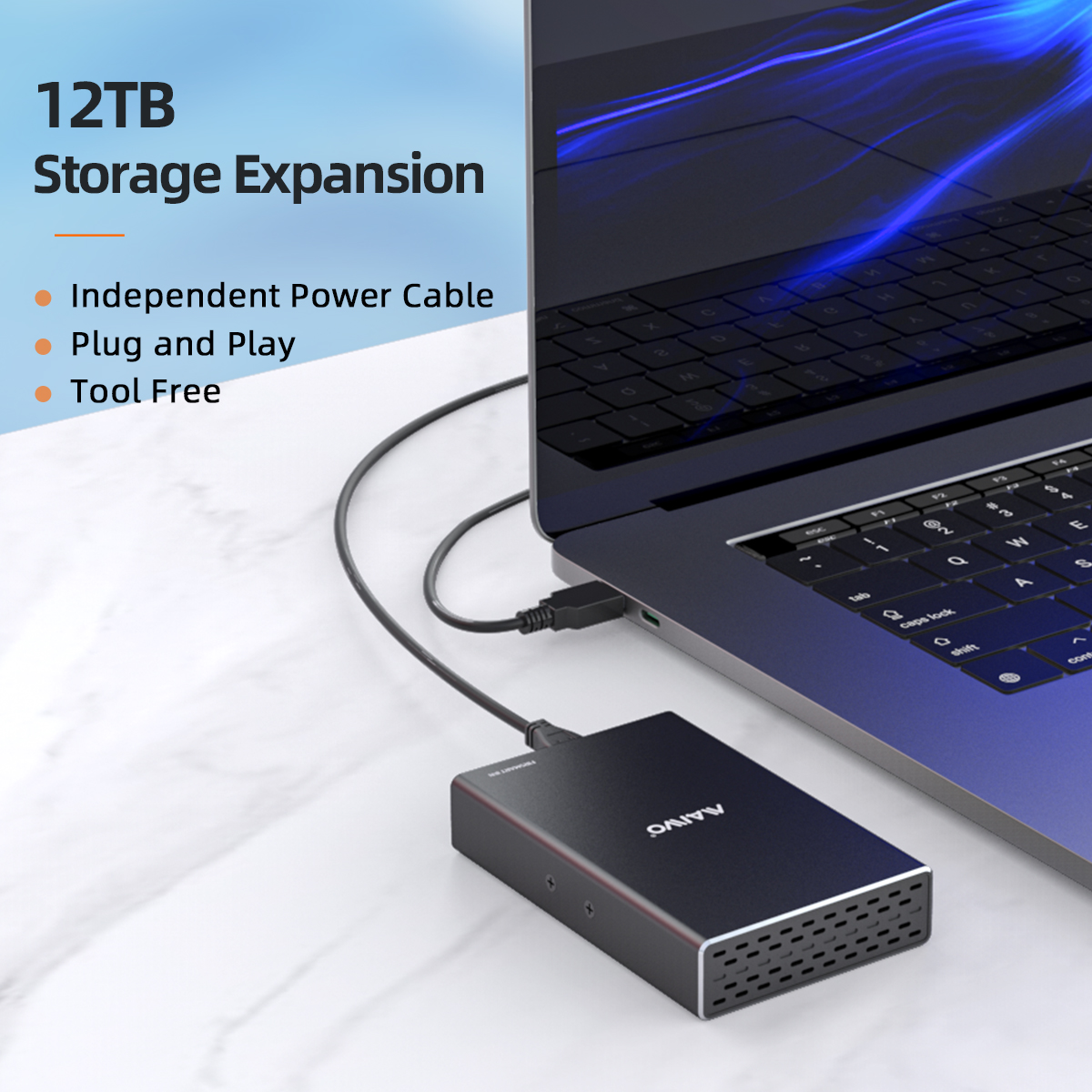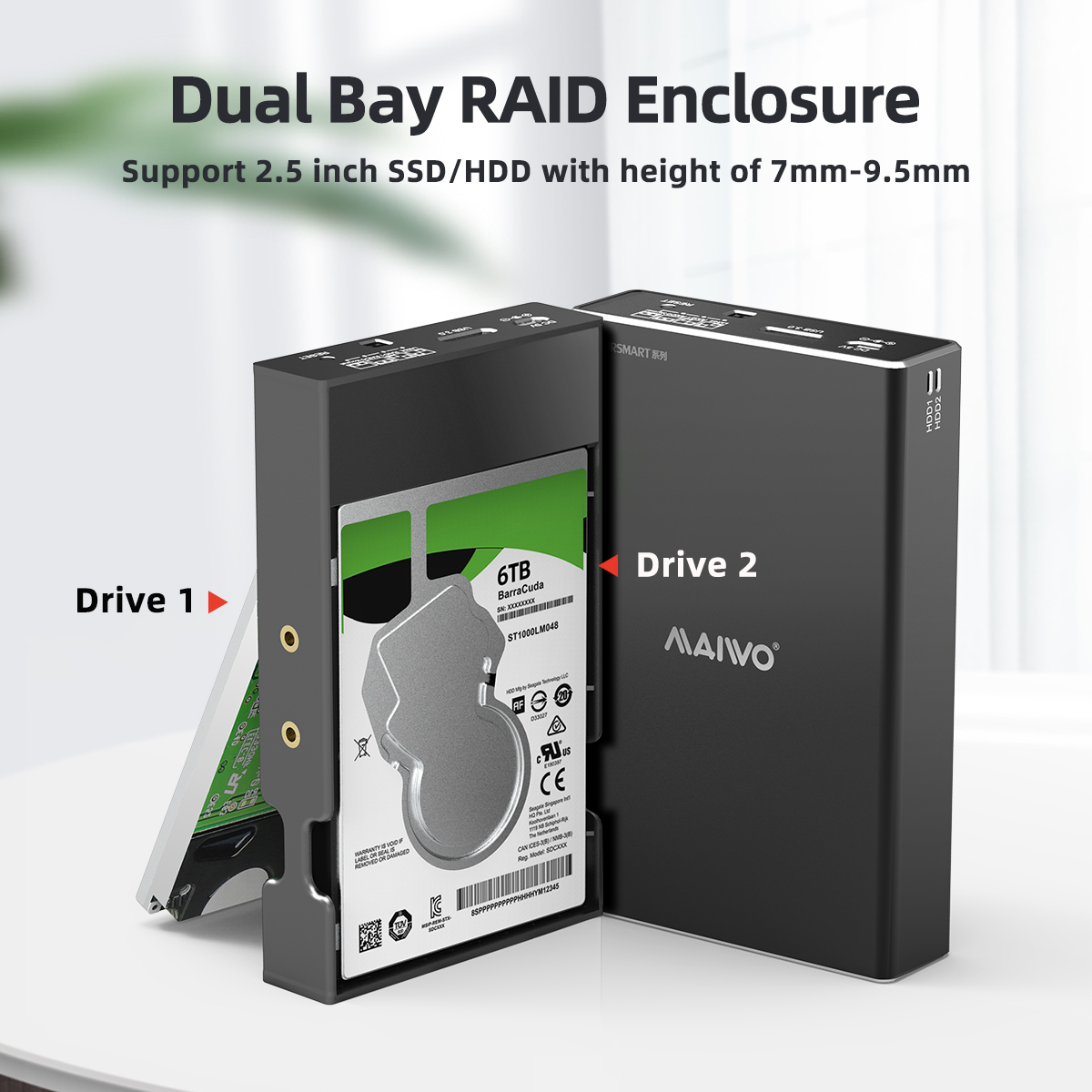Backing up data stored in a NAS (Network Attached Storage) enclosure is essential for protecting against data loss and ensuring the integrity of your files. A NAS enclosure serves as a centralized storage solution for storing and accessing data across a network, making it a critical component of many home and business environments. In this article, we'll explore the importance of backing up data stored in a NAS enclosure and provide a comprehensive guide on how to do it effectively.
Data backup is crucial for safeguarding against various threats that can lead to data loss, including hardware failures, software errors, accidental deletions, malware attacks, and natural disasters. By regularly backing up your data, you can ensure that critical files and documents are protected and can be easily recovered in the event of a data loss incident. Additionally, data backup allows you to maintain multiple copies of your data, providing redundancy and peace of mind.
A NAS enclosure is a device that houses one or more hard drives and connects to a network, allowing multiple users to access and share files and data stored on the drives. NAS enclosures often feature built-in RAID (Redundant Array of Independent Disks) functionality, which enables data redundancy and fault tolerance by distributing data across multiple drives in various configurations. This makes NAS enclosures an ideal solution for storing and managing large volumes of data in home and business environments.

Assess Your Data Backup Needs:
Before proceeding with data backup, assess your data backup needs by identifying critical files, documents, and data that need to be backed up regularly. Determine the frequency of backups and the level of redundancy required based on your data storage requirements.
Select Backup Storage Media:
Choose an appropriate backup storage media for storing backup copies of your data. This can include external hard drives, network-attached storage devices, cloud storage services, or a combination of these options. Ensure that the selected storage media provides sufficient capacity to accommodate your backup needs.
Choose Backup Software:
Select backup software that is compatible with your NAS enclosure and meets your backup requirements. Many NAS enclosures come with built-in backup software that offers features such as scheduled backups, incremental backups, and data encryption. Alternatively, you can use third-party backup software for additional features and customization options.
Configure Backup Settings:
Configure backup settings in the backup software to specify the source data (NAS enclosure) and the destination storage media (backup storage). Customize backup schedules, retention policies, and encryption settings as needed to align with your backup strategy and data protection requirements.
Initiate Backup Process:
Initiate the backup process to start copying data from the NAS enclosure to the backup storage media. Depending on the backup software and configuration settings, the backup process may run automatically according to the predefined schedule or require manual initiation.
Monitor Backup Progress:
Monitor the backup progress to ensure that the backup process completes successfully and without errors. Regularly check backup logs and status notifications provided by the backup software to verify that backups are occurring as expected and that data integrity is maintained.
Test Backup and Recovery:
Periodically test backup and recovery processes to verify the integrity and accessibility of backup copies. Conduct test restores of backed-up data to ensure that files can be recovered accurately and efficiently in the event of a data loss incident. Address any issues or discrepancies identified during testing to maintain the reliability of your backup solution.
Maintain Backup Strategy:
Maintain your backup strategy by regularly reviewing and updating backup settings, schedules, and storage capacity as your data storage needs evolve. Periodically revisit your backup strategy to ensure that it remains aligned with your data protection goals and compliance requirements.

In conclusion, backing up data stored in a NAS enclosure is essential for protecting against data loss and ensuring the availability and integrity of critical files and documents. By following the steps outlined in this guide, you can establish an effective data backup strategy that meets your data protection needs and provides peace of mind knowing that your data is securely backed up and readily accessible when needed. Remember to regularly monitor and test your backup solution to maintain its reliability and effectiveness over time. With a robust backup strategy in place, you can safeguard your data against unexpected threats and minimize the risk of data loss in your home or business environment.